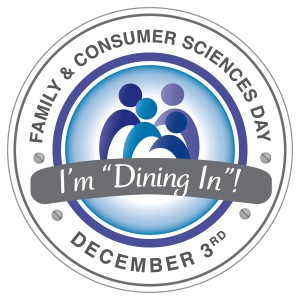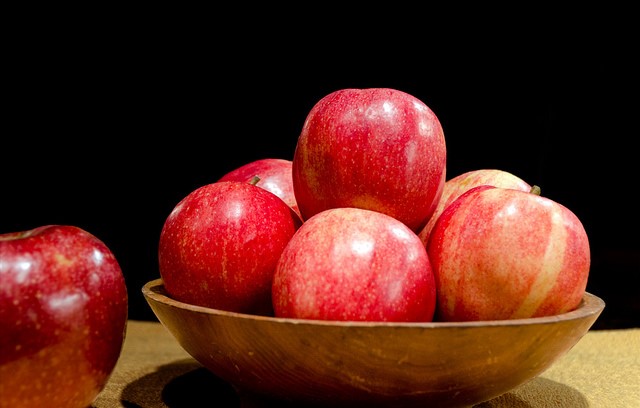
by Dorothy C. Lee | May 25, 2019
Herbs are like people; each herb has its own personality. Some herbs have bold flavors and should be used with care while others are mild and can be used more freely. View Shopping for Health: Herbs and Spices for more about this.
Herbs can be divided into two categories. Accent herbs and herbs that add character to dishes. Parsley, chives, and dillweed are a few of the accent herbs. They are milder in flavor and are often combined within the same recipe. The character herbs; basil, marjoram, rosemary, bay leaves, thyme, sage, and tarragon add dominant flavor to dishes.

Getting to Know Herbs
Photo source: Beth Bolles
A little heat releases the flavor of herbs. Herbs are bitter, however, when cooked too much. Add accent herbs during the last few minutes of cooking time. Character herbs, such as bay leaves, can withstand longer cooking times and usually are added at the beginning of the cooking process.
When selecting fresh herbs, look for plants with an all-over green color. Yellowing indicates old plants, while black, watery areas are a sign of bruising.
To refrigerate fresh herbs for future use, rinse herbs under cold water, pat dry, wrap in paper toweling and refrigerate in a plastic bag. To use, just cut or pull off leaves. Most refrigerated herbs will retain freshness for up to four days to a week.
Herbs can be frozen or dried for longer storage. To freeze fresh herbs, wash herbs, pat dry and freeze in airtight bags or containers. Frozen herbs should be thawed just before use. Fresh herbs can be dried for later use.
When experimenting with a new herb, pull off a leaf and crush it, let it warm in your hand. If it has a delicate aroma you can add more. If it is strong and pungent, use it sparingly. It is always easier to add more of an herb than subtract.
Dried herbs are more concentrated. When cooking with dried herbs use one third of the dried leaves to substitute for the fresh. One teaspoon of dried leaves is equal to one tablespoon of fresh. The fresh leaves are more pungent than the dried.
Cooking with Herbs
Try these herb blends to enhance the flavor of beef, poultry, and seafood dishes.
Salt Free Blend
1 Tablespoon mustard powder
2 teaspoons parsley
2 teaspoons onion powder
2 teaspoons thyme
1 Tablespoon garlic powder
2 teaspoons dill weed
2 teaspoons savory
2 teaspoons paprika
1 teaspoons lemon peel
Garden Blend
3 Tablespoons dried parsley
3 Tablespoons dried basil
3 Tablespoons dried thyme
3 Tablespoons dried marjoram
3 Tablespoons dried rosemary
3 Tablespoons dried chives
3 Tablespoons paprika
½ teaspoon garlic powder
“What is paradise, but a garden of herbs full of pleasure and nothing there but delights”
William Lawson, 1617

by Samantha Kennedy | Apr 10, 2019

One way to be more sustainable when shopping for groceries is to use reusable shopping bags. They’re durable and sturdy and can help reduce the number of plastic bags that end up in the landfill each year. (Photo source: Samantha Kennedy)
Sustainability should not just be a buzzword during Earth Month. The fact that everybody either shops for or eats groceries means the whole grocery shopping experience is a good time to reflect and improve upon what we can personally do to embrace issues of sustainability.
This year in April, the Earth Month theme focuses on Returning to Nature. There is no better place to start a quest for personal sustainable improvement than the grocery store! Grocery shopping truly embraces the three main areas of sustainability: environmental, economic, and social. In fact, it has been well documented that the average family wastes about 25% of the food it purchases. (Much of this ends up in a landfill and creates problems of its own.)
With a bit of forethought, meal planning before grocery shopping can help individuals and families apply sustainable best practices for environmental, economic, and social well-being. In fact, many of the principles of sustainability can be effectively applied to both meal planning and grocery shopping.
RESPECT yourself. Good nutrition is one of the keys to a healthy life. Improve health by keeping a balanced diet. Vow to make healthier food choices for personal health and the environment.
REFUSE to use food products that do not fit your principles of sustainability. This may mean buying food with less packaging, eating more locally-grown fruits and vegetables, or looking for foods labeled as more responsibly sourced.
REDUCE the amount of food thrown out. Planning meals ahead of time and writing out a grocery list are excellent ways to start living sustainably. Planning not only saves money on groceries, it can save time and decrease the amount of personal food waste a family contributes. (Remember, freezing products can prolong their life, so if you find that you’ve overbought, try preserving some of your bounty for later use.) Reducing the number of trips to the grocery store also can help save on fuel and transportation costs.
REUSE /REPURPOSE food for another occasion. Careful meal planning helps ensure that leftovers from one meal can be incorporated into the next one, thereby reducing food waste.
RETHINK! Healthy, nutritious, delicious, and inexpensive grocery choices can be found in every food group. Not all food has to be prepackaged. In fact, with a bit of planning, dinner can be on the table in 15 minutes. (That’s less time than it takes to wait in line at a fast food restaurant.)
BE RESPONSIBLE! Use what you buy.
Stock up on low-cost healthy grain products like whole-wheat noodles, brown rice, and store-brand cereals and oatmeal.
Purchase fruits and vegetables that are in season and cost less. In addition, do not forget that frozen, dried, and canned fruits and vegetables can play an important part in meal planning.
Buy the largest size you can effectively use before it reaches the expiration date – and look for the items with the latest dates. Purchase store brands or generic brands whenever possible. Keep in mind smaller containers tend to cost more, no matter what the food group. Buying larger packages and dividing them into smaller portions can save money and reduce the amount of packaging that ends up in the landfill. Investing in small, reusable storage containers will save money and reduce waste in the end.
Practice Meatless Monday. The protein group provides inexpensive protein sources like beans, lentils, and eggs, which can be substituted for meat in many meals.
Protein does not have to be the most expensive item purchased. Consulting the store’s weekly sales flyer during meal planning can help you plan meals around meat and poultry items that are on sale.
Prepare food your family will actually eat. There are two schools of thought here: preparing just enough for one meal or preparing big-batch recipes that provide leftovers which can be frozen for later use. Either practice can be sustainable. Freeze leftovers only if you’re going to use them. Otherwise, cut down on the amount of food cooked to help reduce food waste.
Learn how to cook. Prepare and eat more meals at home. It is sustainable, good for you, and delicious. Meals cooked at home are more nutritious, less expensive, and result in less overall waste, such as packaging.
Two additional ways to be more sustainable when grocery shopping are to use reusable shopping bags and to stop using single-use plastic produce bags. Plastic grocery bags choke our landfills and end up in our water bodies. They are not biodegradable and can last thousands of years virtually intact. Reusable shopping bags are made from recycled materials and can drastically reduce the number of plastic bags that end up in the trash each year.
For more information on making your grocery shopping more sustainable, check out these related articles:
Freezing: Nature’s Pause Button (UF/IFAS Extension)
What’s in your FREEZER? (UF/IFAS Extension)
Best Practices for Shoppers at the Farmers’ Market (UF/IFAS Extension)
Sustainable Grocery Shopping (University of Northern Iowa)

UF/IFAS Family and Consumer Sciences Agents Heidi Copeland and Samantha Kennedy

by Angela Hinkle | Nov 26, 2018

FCS Dine In Day December 3
Is your busy, busy life making it difficult to spend time eating a meal at home with your family? Research tells us families are healthier in so many ways when they eat at home together. Maybe these favorite family meals from some of our readers will give you some inspiration.
Italian Night
My mother’s chicken cacciatore. She’s Italian and a great cook. She makes it with boneless chicken breasts, rice, sliced peppers, onions, tomatoes, and of course, garlic. It is so good and probably healthy. But maybe not, since I eat way too much of it. Friends and family come together on “Italian Night” to enjoy this and other Italian specialties. Molto delicioso. Rick W.
My favorite meal was always when my mom made homemade spaghetti sauce for pasta. Wow, that’s good stuff. When I brought my girlfriend home, it became one of her favorite meals too. Thanks mom! Alex H.

Father and son set the dinner table. Photo Source: Wendy Meredith
Home Away from Home Meal
My favorite family meal was pork chops, broccoli, mashed potatoes, rolls and sweet tea, because my son, (my first born), cooked his first meal in his first home away from home at the age of 21 and invited our family to dinner. He was always the one out of five children who liked to have everyone in the family sit at the dining room table together and enjoy a meal as often as possible. Our lives consisted of football, cheerleading, church events, ballet, gymnastics, soccer, school events, jobs, etc. Our family of seven was a very busy family and always running here and there, but somehow due to the persistency of our son, we managed to have one or two meals a week together as a family. I was a very happy and proud mom when I received the invite to have dinner that night. The food was delicious, but the fellowship during “My Favorite Family Meal” was something I will remember and cherish forever. Wendy M.
Let Them Eat Cake or Bread
Celebrations were very special in my family. Every year on my birthday, my grandmother would always cook my favorite food and bake my favorite cake (Red Velvet – Yum). When I was young I always thought it was about the food. But it was about so much more; we learned about manners and etiquette, and family coming together to share old traditions and make new ones. Whenever I see a red velvet cake or smell one baking, it brings back happy memories. I’m transformed back to when I was a 10 year old girl. Dorothy L.
Growing up on a farm in Michigan, I’ve got a lot of good memories involving food! From making butter in a churn, to picking blackberries in the woods for Mom to make pie, to getting ripe tomatoes from the garden for a tasty bacon and tomato sandwich and many more. I consider myself very fortunate to have grown up knowing exactly where our food comes from!
A favorite and happy memory is Mom making bread on cold days, letting the loaves rise by the heat registers, then baking it in the oven. The whole house smelled like delicious bread. Once it was done, Mom would cut it while it was still warm and give us thick slices with warm, melting butter on it! Cheryl V.
December 3rd is Dine In Day. It’s a chance to make a commitment to have a meal at home with family. So, make the decision to eat with your family at home this December 3rd.

FCS Dine In Day

by Angela Hinkle | Nov 21, 2018

FCS Dine In Day December 3
What’s your favorite family meal? Is it an event like a picnic or Super Bowl Party? Is it reoccurring like Wednesday night church dinner? Maybe it’s an annual meal like Thanksgiving. Check out some of these special Thanksgiving meals, then think about a favorite meal for your family to share on Dine In Day.
What about Sweet Potatoes?
I think my favorite holiday meal story is from about 10 years ago when our oldest daughter was away at college. She asked me what we were going to have for Thanksgiving Dinner and as I went through the list she said, “what about sweet potatoes?” to which I answered “but you don’t like sweet potatoes”. Then she said, “No, I don’t, but I they’re supposed to be on the table at Thanksgiving”!
It’s such a tiny thing, but it touched my heart because it meant she had fond memories and that our family holiday dinners meant something to her! PS – now she loves sweet potatoes and serves them to her family all the time! Susan H.
My “Found” Family

Favorite Fall Things
Photo Source:: Angela Hinkle
My favorite family meal of the year is on Thanksgiving, with my “found” family in Bradenton. Especially now that I live in Tallahassee, taking the trip down there to spend a few days with my best friend and her crazy family is definitely a highlight. It’s even more special now since I don’t get to see her every day anymore. Plus? Turkey and deviled eggs! Yummy. Sam K.
Memory We Will Always Cherish
My favorite meal happened 6 years ago during Thanksgiving. It was the first year that I hosted my own Thanksgiving dinner and my husband and I invited everyone we knew- family, friends, coworkers. We had 30 people share their holiday with us and we had so much fun. It was a lot of work and a lot of cooking, but it was so special to us. That day we were able to honor the ones we loved by hosting them and sharing that experience. One day, we will do that again. But for now, it’s a great memory that we will always cherish. Christina W.
Imagining Warm and Cozy
One of my most memorable meals was Thanksgiving when I was in the 11th grade. My family decided to go camping in our pop-up camper for the weekend at a nice campground in central Florida. In keeping with the season, a cold front passed through that weekend, dropping the temperature significantly. Our little camper did not have a heater, so we shivered in our bunks and scurried to the central bathhouse, passing motor homes and travel trailers with condensation on the windows, imagining how warm and cozy their occupants must be. Despite the frigid temperatures, we enjoyed a campground-wide Thanksgiving dinner with all the trimmings in the community room. We made fond memories of the weekend, which we still laugh about, and are thankful for a warm house and the comforts and conveniences of home to enjoy the holiday and everyday meals with family and friends. Judy C.

FCS Dine In Day
December 3rd is Dine In Day. It’s a chance to make a commitment to have a meal at home with family. Research tells us families are healthier in so many ways when they eat at home together. So, make the decision to eat with your family at home this December 3rd. Maybe you can tell us about your favorite family meal or be inspired to make new ones – for Thanksgiving or any time of year.

by Dorothy C. Lee | Oct 3, 2018

Bowl of apples
Photo source: bing
October is National Apple Month. “A” is for Apple. We have all heard this childhood saying as well as other apple idioms.
The Fall season has arrived and along with cooler weather, shorter days, and autumn leaves comes the bounty of Fall………apples.
In Autumn, apples fill farmers market and grocery store bins with seasonal shades of red, green, yellow, and russet. Popular varieties of apples grown in the United States include Mcintosh, Fuji, Red Delicious, Gala, Crispin, Honeycrisp, Granny Smiths, and Golden Delicious.
Nutrition
A large raw apple contains about 95 calories. Apples provide fiber, vitamins, and minerals. Apples are low in calories and high in antioxidants.
Selection
Each apple variety has its own distinctive flavor and texture. When purchasing apples choose a variety suitable for your intended use. Best apples for eating cooking baking The surface of the apple should be smooth, firm, unbroken, and free from bruises.
Preparation
Apples are delicious eaten raw. Simply rinse, cut into quarters and remove core from each section and slice. Use a vegetable peeler or a sharp knife to peel apples for cooking. To core apples for cooking push an apple corer through center of fruit from top to bottom, pull out core and stem. Coat peeled or sliced apples with lemon juice to prevent darkening. A bag of medium sized apples yields about 3 cups diced fruit or 2 ½ cups sliced fruit.
Cooking with Apples
Apples are the most versatile of all fruits. They are suitable for a variety of cooking techniques and can be used in a variety of recipes. Apples can be baked, grilled, poached, and even sautéed. Add diced apples to salads or dried and added to granola cereal. Sauté to accompany meat dishes and add to pancakes or waffle batter. For desserts, pair apples with a variety of cheeses.
Storage
Apples ripen faster at room temperature than in the refrigerator. Store apples in the refrigerator in a plastic bag to help retain moisture.
Celebrate the bounty of Fall with apples at their peak of flavor.

by Dorothy C. Lee | Jul 30, 2018

Instant Pot settings display. Photo source: Wendy Meredith
An Instant Pot Pressure Cooker is a small electronic multi-cooker appliance that can function as a pressure cooker, slow cooker, rice cooker, steamer, warmer, and more. It is often referred to as an Instant Pot. It is currently the hottest trend in home cooking.
An Instant Pot Cooker can prepare just about any type of food you can imagine. Poultry, beef, and pork recipes, soups, stews, bread, and even desserts.
Considering today’s fast paced lifestyle the Instant Pot is a time saving kitchen helper. Spend a few minutes preparing the recipe ingredients, program the Instant Pot and relax. The Instant Pot cooking method takes the stress out of long cooking times and of meal preparation.
Instant Pot cookers are available in a variety of sizes, styles, and functions. The function of an Instant Pot is based on the model purchased. Many brands are available. Basic functions present in most models consist of slow cooker, pressure canner, steamer, rice cooker, yogurt maker, egg cooker, sauté or browner, and warmer.
When purchasing a multi-cooker consider the usage and quantity of food to be prepared. A 3-quart cooker is just the right size for single servings. Family sizes are available as 6-quart (4-6 servings) or 8 -quart (6-8 servings).
The benefits of an Instant Pot cooker are numerous. No need for constant or frequent stirring, no worry about overcooking or burning, saves energy based on quick cooking times required for recipes and less small kitchen appliances needed for preparation.
Traditionally beef stew and less tender cuts of meat take hours of cooking to render tender. The Instant Pot Cooker dishes up these delicious dishes in under an hour.
Corned Beef Cabbage*
2 pounds corned beef
2 cups chicken broth
2 cups water
3 bay leaves
8 peppercorns
¼ cup apple cider vinegar
8 medium red or white potatoes
8 cups coarsely sliced cabbage
Place beef in cooker. Add stock, water, bay leaves, peppercorns, and vinegar in cooker. Cook for 90 on meat/stew setting. Remove corned beef. Add vegetables; cook on high pressure for 4-5 minutes.
*Follow directions listed on Instant Pot instruction manual for programming cooker.
Instant Pot cooking is easy, economical and quick.
Recipe adapted from Cooks’ Essentials.














